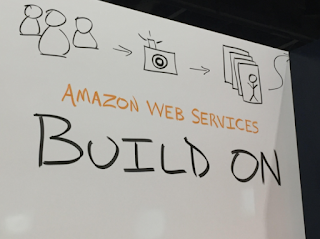NTT, Intel and Sony are joining forces to create a new Innovative Optical and Wireless Network (IOWN) Global Forum, which aims to accelerate the adoption of new communications infrastructure. The goal is to will bring together an all-photonic network including silicon photonics, edge computing, and distributed connected computing, along with wireless access..
IOWN will develop new technologies, frameworks, specifications and reference designs, in areas such as:
NTT, Intel, and Sony are inviting other technology, telecommunications and industry organizations to join the forum.
"NTT has a long history in photonics-related R&D and has achieved cutting-edge results in fields like silicon photonics and optoelectronic convergence. Based on these technologies, NTT aims to power the next generation of technology innovation and solve many of today’s societal challenges, such as ever-increasing power consumption. We will bring our leading R&D expertise to foster the photonics revolution and unlock new technologies to ultimately enable a smart world, where technology becomes so ”natural” that people are unaware of its presence. NTT is looking forward to collaborating with its best-in-class partners and realizing a smart world," states Jun Sawada, President and CEO, NTT.
“Digital transformation and the growth of data is driving an infrastructure build out that will dwarf the first era of the cloud defined by hyperscale data centers... The combination of superfast networking and pervasive high-performance computing – the edge infrastructure to deliver smart services anywhere, anytime – can only be achieved with a profoundly new mindset shared across a global ecosystem. The IOWN collaboration is an important step forward. A vision of this magnitude can only be achieved with global leaders across industries. Intel is honored to join forces with NTT and Sony in this industry-wide journey to help define the future of technology,” says Bob Swan,
NTT Research is opening three labs in Palo Alto, California to focus on quantum computing; cryptography and information security; and medical and health informatics.
In an opening ceremony, NTT President and CEO Jun Sawada said the mission of the new labs is to pursue fundamental breakthroughs in photonic and quantum technologies.
“Our new research center, located in the heart of Silicon Valley, will draw upon the strength and heritage of applied research and innovation from NTT R&D in Japan and will be an ongoing opportunity for sharing groundbreaking research in important technology fields with global partners, clients and academics,” said Mr. Sawada. “Our goal is to strengthen the fundamental research needed for global innovation and next-generation technologies.”

NTT Research consists of NTT Φ (PHI) Laboratories, to focus on Physics and information science (Informatics); NTT Cryptography & Information Security (CIS) Laboratories, to explore advanced cryptography theory and practice; and NTT Medical & Health Informatics (MEI) Laboratories, to investigate areas such as the application of artificial intelligence (AI) on biological data. Kazuhiro Gomi, the former CEO of NTT America, serves as the center’s President and CEO. NTT appoints world-renowned academics and researchers as directors of its three laboratories:

- Professor Yoshihisa Yamamoto to be appointed director of NTT PHI Laboratories, Quantum Science & Computing. Professor Emeritus at NII (Tokyo) and program manager of the Government of Japan’s ImPACT program, Dr. Yamamoto is an expert in quantum optics and information processing. He has also been affiliated with the University of Tokyo, NTT Basic Research Labs, MIT, the Royal Institute of Technology (Sweden), AT&T Bell Labs, Stanford, the Japanese Science and Technology Agency (JST), and RIKEN.
- NTT Fellow Tatsuaki Okamoto to be appointed director of NTT CIS Laboratories, Cryptography & Information Security. Dr. Okamoto is an internationally acclaimed cryptography scientist, recognized for his work in third-generation cryptosystems and the promotion of a trustworthy digital society. He has also held positions at NTT Yokosuka Electrical Communication Labs, the University of Tokyo, the University of Waterloo (Canada), AT&T Bell Labs, Tsukuba University and Kyoto University.
- Professor Hitonobu Tomoike to be appointed director of NTT MEI Laboratories, Medical Health Informatics. Professor Tomoike conducts research into precision medicine, based on bio-sensors and analytics. He is an Advisor to and former Director of the Sakakibara Heart Institute and Fellow of the American College of Cardiology and American Heart Association. He has also held positions at UCSD, Kyushu University, Yamagata University, and the National Cerebral and Cardiovascular Center (Osaka).
“NTT R&D, with more than 6,000 researchers and an annual budget of $3.6 billion, is already one of the world’s largest and most respected research groups,” said Mr. Gomi, NTT Research President and CEO. “Our new center in Palo Alto will not only leverage those assets, but also engage with peers in this highly innovative region, enhancing the value that we bring to our trusted global partners.”
NTT Research is also looking at opening additional offices in Boston, Munich, Israel and London.
http://www.ntt-research.com The carrier is offering a number of 5G subscriptions starting with a Personal Plan priced at RMB 128 per month (~US$18). Family plans and business plans are also available. Downlink speed caps and data caps apply.
The carrier is offering a number of 5G subscriptions starting with a Personal Plan priced at RMB 128 per month (~US$18). Family plans and business plans are also available. Downlink speed caps and data caps apply. The carrier is offering a number of 5G subscriptions starting with a Personal Plan priced at RMB 128 per month (~US$18). Family plans and business plans are also available. Downlink speed caps and data caps apply.
The carrier is offering a number of 5G subscriptions starting with a Personal Plan priced at RMB 128 per month (~US$18). Family plans and business plans are also available. Downlink speed caps and data caps apply.











































